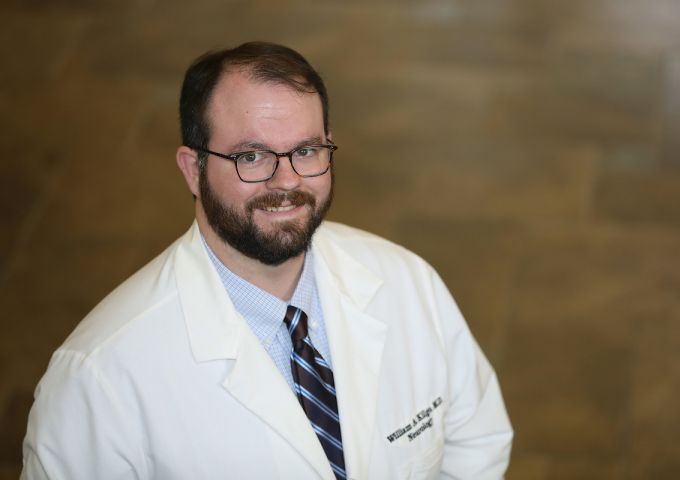
Fourth year, best year: A day in the life of a fourth-year medical student
Malik McMullin, a fourth-year medical student at the University of South Alabama College of Medicine, takes us on a journey of his everyday life as he explains the rigors of medical school.
By Nichelle Smith
Malik McMullin, a fourth-year medical student at the University of South Alabama College of Medicine, takes us on a journey of his everyday life as he explains the rigors of medical school.
“The fourth year of medical school is vastly different from the other three years,” McMullin said. “It is broken down into 10, four-week blocks where we can have a lot of customization over our schedules.”
Between traveling for residency interviews and studying for the USMLE Step 2 CK exam, McMullin said his days are packed. “It is a rewarding yet exhausting experience,” he said. “We all have worked so hard for this opportunity with the goal in mind – securing the residency program of our choice,” he said.
McMullin said he chose to drive to all of his residency interviews, grouping each program by region to be most efficient. “I actually had a stretch where I was gone from home for four weeks and attended eight interviews during that time. In between interviews, I would stay at family and friends' houses to save money.”
When he’s not on the road traveling for residency interviews, McMullin said he is busy participating in acting internships (AIs). “Our most structured days are probably during our acting internships,” he said. “I completed two acting internships to help prepare for my residency training, one in internal medicine and another in pediatrics.”
McMullin said his typical AI schedule includes:
6 a.m. – Wake up.
6:45 a.m. – Arrive at the hospital. “Usually I will print a patient handoff list for the entire team, which consists of one attending, one upper-level resident, two to three interns, and two to three medical students,” he said.
7 a.m. – Head to the resident lounge for handoffs. “Usually, the upper-level residents and interns have to be there by 7 a.m. to get check-out from the night time and as acting interns, we will join them,” he said.
7:15 to 9:30 a.m. – Chart check and see patients. “I review labs and imaging before seeing my patients in the morning,” he said. “This all happens before the attending shows up at 9:30. We call this pre-rounding or rounding before the attending arrives. This allows time to start developing a plan for patient care as well as work on writing notes.”
9:30 a.m. – The attending physician arrives and rounds begin. “Many attending physicians round differently,” he said. “For my team, we usually stayed at the table to discuss patients in the rounding room. Frequently, the third-and fourth-year medical students are the ones presenting the patients and the plan of treatment to the attending physicians, which is why we pre-round and discuss plans of care with our residents before the attending arrives.”
Noon to 2 p.m. – Patient rounds end. “One day per week, the interns have something called academic half day which is where they go and learn about a clinical topic,” he said. “Fourth-year medical students will also usually attend academic half day. The upper-level resident takes any pagers so that the interns can learn at half day without interruption. I also use this time to eat, but they usually feed the residents and students at half day. If there is no academic half day, we use that time to write notes and work with the team on discharging any patients.”
2 to 4 p.m. – Admit new patients. “The floor teams usually get new patients starting at 2 p.m.,” he said. “These can be new patients through the emergency department or patients from the ICU who no longer need ICU level care. As medical students, the team will let us see them first and give us time to develop our own thoughts on diagnosis for learning purposes. If we get a new patient from the ED, I will see them, take a full history and physical exam, and write my own patient note with my personal plan of care with assistance from the upper-level resident. We try to finish up admissions by 4:30 to 5 p.m. in order to check out to the team on call.”
4:30 to 7 p.m. – Check out patients to the night team. “As an acting intern, I will inform the night resident about the patients that I am managing while my upper-level resident listens and chimes in when necessary,” he said.
McMullin said the end of his day varies based on what rotation he is on, but most of his days end of with catching up on shows that he doesn’t have as much time to watch early in medical school.




